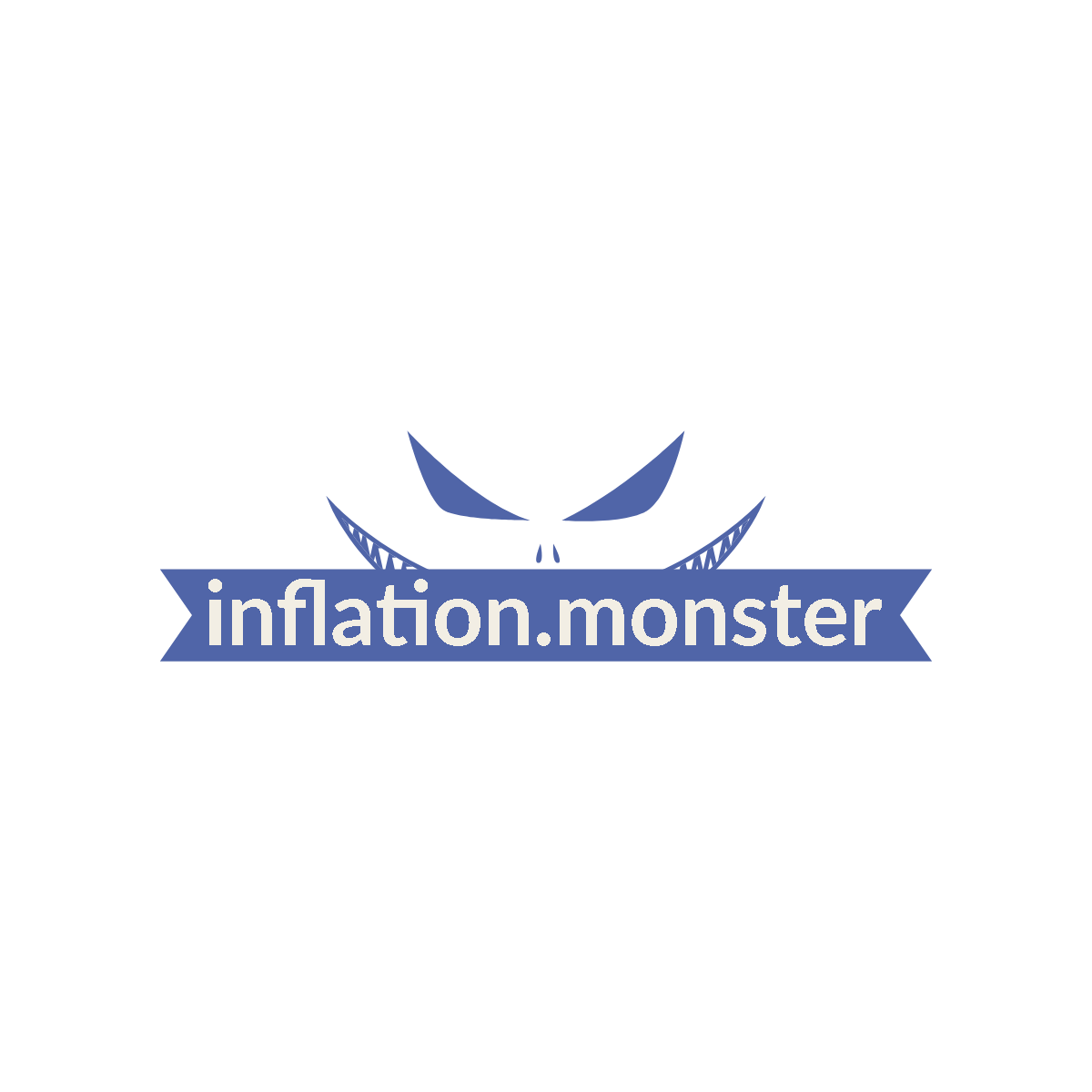Are you ready to unlock the secrets of the monetary world? At Inflation.Monster, we’re here to shed light on one of the most perplexing phenomena in economics: inflation. Join us on this journey as we demystify the enigma that is inflation and equip you with the tools to understand its impact on money and economics. In today’s article, we’ll delve into the role of central banks in controlling inflation, offering you valuable insights into this crucial aspect of monetary policy. So buckle up, because we’re about to navigate the labyrinthine world of central banks and inflation control.

The Role of Central Banks in Controlling Inflation
Introduction to Central Banks
Central banks play a crucial role in a country’s economy by implementing monetary policies and maintaining price stability. They are responsible for controlling inflation, which is the sustained increase in the general price level of goods and services over time. Inflation can have detrimental effects on consumers, businesses, and the overall economy, which is why central banks are entrusted with the task of keeping inflation in check.
Definition of Inflation
Inflation is commonly defined as the rate at which the general level of prices for goods and services is rising, eroding the purchasing power of a country’s currency. When inflation occurs, consumers need to spend more money to purchase the same goods and services they previously bought for less. Inflation can adversely affect various aspects of the economy, including wage growth, interest rates, and investment.
Why Inflation Control is Important
Inflation control is essential for maintaining economic stability and fostering sustainable economic growth. When inflation is high and unpredictable, it creates uncertainty and reduces consumer and investor confidence. Businesses may hold back on investment due to uncertainty surrounding future costs, while consumers may postpone purchases. This can lead to a decrease in economic activity and hinder overall economic growth.
Objectives of Central Banks
Central banks have a primary objective of achieving price stability and controlling inflation. However, their responsibilities often extend beyond just inflation control. They also aim to promote stable economic growth, maintain financial stability, and minimize unemployment. By implementing appropriate monetary policies, central banks strive to achieve a balance between these objectives while focusing on price stability as a foundation for economic stability.
Tools for Inflation Control
Central banks employ a range of tools to control inflation and achieve their objectives. These tools are primarily related to the implementation of monetary policy, which is the process by which a central bank manages the money supply and interest rates in an economy. Some of the key tools utilized by central banks include monetary policy, interest rates, open market operations, and reserve requirements.
Monetary Policy
Monetary policy refers to the actions taken by a central bank to manage the money supply and interest rates in an economy. By adjusting these factors, central banks can influence economic growth and inflation. Expansionary monetary policy aims to stimulate the economy by increasing the money supply and lowering interest rates, while contractionary monetary policy aims to rein in excessive inflation by reducing the money supply and raising interest rates.
Interest Rates
Interest rates play a critical role in inflation control. Central banks have the authority to set the benchmark interest rates, which influence borrowing costs for businesses and consumers. By raising interest rates, central banks can reduce spending and discourage borrowing, thereby curbing inflation. Conversely, lowering interest rates stimulates spending and borrowing, promoting economic growth and potentially increasing inflation in the process.
Open Market Operations
Open market operations involve the buying and selling of government securities (such as bonds) by the central bank in the open market. By purchasing government securities, central banks increase the money supply in the economy, leading to lower interest rates and potentially higher inflation. Similarly, selling government securities reduces the money supply, raising interest rates and potentially lowering inflation.
Reserve Requirements
Reserve requirements refer to the amount of funds that banks are required to hold in reserve, either as cash or deposits with the central bank. By adjusting reserve requirements, central banks can influence the amount of money banks have available for lending. Increasing reserve requirements reduces the amount of money banks can lend, which can lead to a decrease in spending and inflation. Conversely, decreasing reserve requirements frees up more money for lending, potentially stimulating spending and inflation.
Feedback Mechanisms
Central banks closely monitor economic indicators and feedback mechanisms to assess the effectiveness of their inflation control measures. These indicators include consumer price index (CPI), core inflation, and inflation expectations. Central banks use these indicators to gauge the current and future state of inflation and adjust their monetary policy tools accordingly. By closely monitoring these indicators, central banks can respond proactively to changes in the economy and maintain price stability.
The Relationship Between Central Banks and Government
Central Bank Independence
Central bank independence refers to the extent to which a central bank can operate without interference from the government or political pressure. Independence is crucial for central banks to carry out their inflation control objectives effectively. By operating independently, central banks can make decisions based on economic factors rather than short-term political considerations, ensuring a more focused approach to inflation control.
Cooperation with Government
While central banks strive for independence, they also recognize the importance of cooperation with the government. Close cooperation between central banks and governments is necessary to align monetary and fiscal policies. Effective coordination allows for a more coherent and comprehensive approach to economic stability and inflation control. By working together, central banks and governments can address challenges and implement policies that support long-term economic growth.
Exchange of Information
Central banks and governments engage in the exchange of information to ensure effective decision-making. This exchange includes sharing economic data, forecasts, and policy intentions. Governments provide insights into fiscal policies, while central banks contribute their expertise in monetary policy and inflation control. Transparent communication and information sharing between central banks and governments foster a collaborative environment that benefits both parties.
Conflict of Objectives
Despite the common goal of maintaining stability, conflicts of interest can arise between central banks and governments. Governments may prioritize short-term political objectives, such as reducing unemployment or stimulating economic growth, which can conflict with central banks’ focus on long-term price stability. These conflicts can potentially undermine central banks’ ability to control inflation effectively. Striking a balance between short-term and long-term objectives requires ongoing dialogue and cooperation.
Political Pressure
Central banks can face political pressure, particularly in cases where the government seeks to influence monetary policy decisions for short-term political gain. Politicians may advocate for accommodative monetary policies, such as lowering interest rates, to stimulate economic activity and boost their chances of electoral success. However, succumbing to such political pressure can undermine the credibility and effectiveness of central banks in controlling inflation. Maintaining the independence of central banks from political interference is vital to ensure their ability to make sound monetary policy decisions.

Case Studies: Central Banks’ Approach to Inflation Control
The Federal Reserve (United States)
As the central bank of the United States, the Federal Reserve (Fed) plays a vital role in controlling inflation. The Fed implements monetary policy through adjusting interest rates and conducting open market operations. The dual mandate of the Fed includes promoting maximum employment and price stability. The Fed closely monitors indicators such as CPI and inflation expectations to make data-driven decisions and maintain inflation at a target level.
European Central Bank (Eurozone)
The European Central Bank (ECB) is responsible for the monetary policy of the Eurozone countries. The ECB’s primary objective is to maintain price stability and, as defined by the Maastricht Treaty, keep inflation below, but close to, 2%. The ECB uses a range of tools, including interest rate adjustments and open market operations, to control inflation. It also considers other factors such as economic growth and fiscal policies when formulating its monetary policy decisions.
Bank of England (United Kingdom)
The Bank of England (BoE) plays a significant role in controlling inflation in the United Kingdom. The BoE’s Monetary Policy Committee (MPC) is responsible for setting monetary policy to meet the inflation target set by the government. The MPC adjusts interest rates and utilizes open market operations to manage inflation. It considers various economic indicators and forecasts, such as the CPI and inflation expectations, to determine the appropriate monetary policy stance.
Bank of Japan (Japan)
The Bank of Japan (BoJ) implements monetary policy to control inflation and promote economic stability in Japan. The BoJ sets a target for inflation and adjusts its monetary policy tools, including interest rates and open market operations, to achieve that target. Given Japan’s history of deflation, the BoJ has implemented unconventional monetary policies such as quantitative easing to stimulate the economy and combat deflationary pressures.
People’s Bank of China (China)
The People’s Bank of China (PBOC) plays a crucial role in controlling inflation in China. The PBOC focuses on managing the money supply, interest rates, and exchange rates to achieve its inflation control objectives. While China’s inflation target is not explicitly defined, the PBOC aims to maintain stable prices and a moderate level of inflation. It uses a combination of monetary policy tools to influence inflation and support economic growth.
Challenges Faced by Central Banks in Inflation Control
Managing Expectations
Central banks face the challenge of managing inflation expectations among consumers, businesses, and financial markets. If individuals and market participants anticipate higher future inflation, they may adjust their behavior, which can influence spending, investment, and price-setting decisions. Central banks must communicate their inflation targets and policy intentions clearly to shape these expectations and ensure their effectiveness in controlling inflation.
Supply Shock
Supply shocks, such as disruptions in the availability or cost of key inputs, can pose challenges for central banks in controlling inflation. When supply decreases or costs increase, businesses may pass on these higher costs to consumers, leading to higher inflation. Central banks must carefully consider whether supply shocks are temporary or long-lasting to determine the appropriate monetary policy response.
Demand Shock
Demand shocks, which result from sudden changes in consumption or investment behavior, can also impact central banks’ ability to control inflation. If demand suddenly increases, it can lead to excess demand for goods and services, driving prices higher. Conversely, a sharp decline in demand can lead to deflationary pressures. Central banks need to assess the underlying causes of demand shocks to determine the appropriate monetary policy actions.
Unemployment
Balancing the objectives of price stability and maximum employment can be challenging for central banks. In some cases, reducing inflation may require raising interest rates, which can hinder job creation and increase unemployment. Central banks need to carefully consider the trade-offs between inflation control and employment to ensure a balanced approach that supports sustainable economic growth.
Fiscal Policy
Central banks may face challenges in coordinating their actions with fiscal policy measures implemented by governments. Fiscal policies, such as changes in taxation or government spending, can have an impact on inflation. Central banks must consider the potential effects of fiscal policy measures when formulating their monetary policy decisions to ensure a coordinated approach to inflation control.
Global Factors
Central banks operate in a globalized world where economic developments in one country can have spill-over effects on others. Global factors, such as fluctuations in commodity prices, foreign exchange rates, or changes in global demand, can influence inflation dynamics. Central banks need to account for these global factors when formulating their monetary policy decisions and responding to inflationary pressures in their respective economies.

The Impact of Inflation Control on Economy and Society
Price Stability
Price stability is a vital outcome of inflation control. When inflation is low and stable, consumers and businesses can plan their financial decisions with confidence. Stable prices also contribute to a predictable business environment, which encourages investment and economic growth. Price stability protects the purchasing power of individuals’ incomes and promotes overall economic stability.
Income Distribution
Inflation can affect income distribution within society. Certain groups, such as fixed-income earners or individuals with low wages, may be disproportionately impacted by inflation. Controlling inflation helps mitigate the negative effects on vulnerable segments of the population, ensuring a more equitable distribution of income and reducing the potential for social unrest.
Investment and Economic Growth
Inflation control plays a crucial role in promoting investment and economic growth. When inflation is low and stable, businesses can make informed investment decisions without the uncertainty of rising costs eroding their profitability. Low inflation reduces the risk premium associated with long-term investments, encouraging productive economic activity and fostering sustainable economic growth.
Consumer Confidence
Inflation control enhances consumer confidence, which is crucial for the functioning of the economy. When consumers are confident in the stability of prices, they are more likely to make purchasing decisions and contribute to economic growth. Confidence in price stability and the overall economic environment also encourages saving and long-term financial planning.
International Competitiveness
Controlling inflation helps maintain a competitive advantage in international trade. When prices are stable, businesses can offer their products and services at competitive prices in global markets. Price stability also supports a stable exchange rate, reducing the risk of currency volatility and enhancing a country’s international competitiveness.
Critiques of Central Banks’ Approach to Inflation Control
Effectiveness of Monetary Policy
Some critics argue that the effectiveness of traditional monetary policy tools, such as interest rate adjustments, may be limited in controlling inflation in certain circumstances. They contend that other factors, such as fiscal policy, global developments, or structural issues, can overshadow the impact of monetary policy on inflation. These critics call for a more comprehensive approach that considers a broader range of factors influencing inflation dynamics.
Inequality
Controlling inflation can have unintended consequences on income inequality. When central banks raise interest rates to curb inflation, it can disproportionately impact individuals and businesses with high debt levels, potentially exacerbating income inequalities. Critics argue that central banks should consider the distributive effects of their policies to ensure a fair and balanced approach to inflation control.
Financial Market Distortions
Ultra-loose monetary policies, such as prolonged periods of low interest rates, can lead to financial market distortions. Investors may take on excessive risk or misallocate capital due to the availability of cheap credit. Critics argue that central banks need to be mindful of these potential distortions and provide clear signals to prevent the buildup of systemic risks in financial markets.
Lack of Accountability
Central banks are often criticized for lacking transparency and accountability in their decision-making processes. Critics argue that the significant influence central banks wield over the economy warrants greater scrutiny and democratic accountability. There are calls for enhanced transparency, clearer communication, and mechanisms to hold central banks accountable for their actions and their impact on inflation and the overall economy.
Inflation Targeting Critiques
Inflation targeting, the practice of setting a specific inflation target, has faced criticism. Critics argue that rigidly adhering to a fixed inflation target can lead to overly restrictive monetary policies, potentially harming economic growth. They suggest that central banks should adopt a more flexible approach that considers a wider range of economic indicators and allows for deviations from the target when warranted by economic conditions.
Alternatives to Central Bank’s Role in Inflation Control
Market-Based Monetary Systems
Advocates of market-based monetary systems argue for a shift away from central bank control over monetary policy. They propose a system where the money supply is determined by market forces, such as the interaction of supply and demand for money. In such a system, inflation control would be achieved through market mechanisms, removing the need for a centralized authority like a central bank.
Cryptocurrencies
Cryptocurrencies, such as Bitcoin, have gained attention as potential alternatives to traditional central bank-controlled currencies. Proponents argue that cryptocurrencies offer a decentralized and transparent monetary system that can provide more stable and predictable inflation control. However, critics raise concerns about the volatility and lack of regulation in the cryptocurrency market, questioning their ability to serve as a reliable inflation control mechanism.
Commodity-Backed Currencies
Another alternative is the use of commodity-backed currencies, where the currency is tied to the value of a specific commodity, such as gold or silver. Advocates argue that commodity-backed currencies can provide a more stable and inflation-resistant form of money. However, these systems also face challenges related to the availability and storage of the underlying commodities and may limit the flexibility of monetary policy.
Role of Government
Some proponents argue for a greater role of the government in inflation control, as opposed to solely relying on central banks. They propose that fiscal policy measures, such as taxation and government spending, can be used more actively to manage inflation. By utilizing a combination of monetary and fiscal policies, governments could potentially achieve a more comprehensive and coordinated approach to inflation control.
Conclusion
Central banks play a crucial role in controlling inflation and maintaining economic stability. Through their monetary policy tools and close cooperation with governments, central banks strive to achieve price stability and support sustainable economic growth. However, they face challenges in managing expectations, balancing objectives, and navigating global factors. Central banks’ effectiveness in controlling inflation has a significant impact on the economy and society, influencing price stability, income distribution, investment, and consumer confidence. While critiques exist regarding their approach, central banks continue to evolve and adapt to the changing economic landscape. As the future unfolds, their role in inflation control will remain a critical pillar of economic governance.




